Introduction to Ecology
advertisement
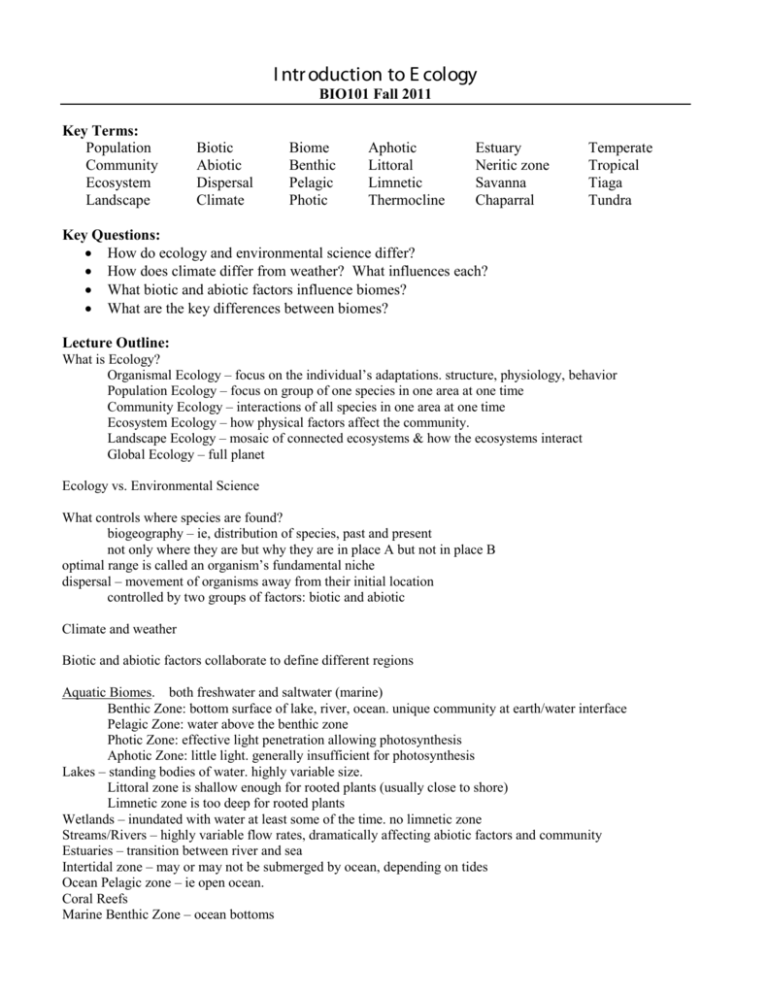
I ntr oduction to E cology BIO101 Fall 2011 Key Terms: Population Community Ecosystem Landscape Biotic Abiotic Dispersal Climate Biome Benthic Pelagic Photic Aphotic Littoral Limnetic Thermocline Estuary Neritic zone Savanna Chaparral Temperate Tropical Tiaga Tundra Key Questions: • How do ecology and environmental science differ? • How does climate differ from weather? What influences each? • What biotic and abiotic factors influence biomes? • What are the key differences between biomes? Lecture Outline: What is Ecology? Organismal Ecology – focus on the individual’s adaptations. structure, physiology, behavior Population Ecology – focus on group of one species in one area at one time Community Ecology – interactions of all species in one area at one time Ecosystem Ecology – how physical factors affect the community. Landscape Ecology – mosaic of connected ecosystems & how the ecosystems interact Global Ecology – full planet Ecology vs. Environmental Science What controls where species are found? biogeography – ie, distribution of species, past and present not only where they are but why they are in place A but not in place B optimal range is called an organism’s fundamental niche dispersal – movement of organisms away from their initial location controlled by two groups of factors: biotic and abiotic Climate and weather Biotic and abiotic factors collaborate to define different regions Aquatic Biomes. both freshwater and saltwater (marine) Benthic Zone: bottom surface of lake, river, ocean. unique community at earth/water interface Pelagic Zone: water above the benthic zone Photic Zone: effective light penetration allowing photosynthesis Aphotic Zone: little light. generally insufficient for photosynthesis Lakes – standing bodies of water. highly variable size. Littoral zone is shallow enough for rooted plants (usually close to shore) Limnetic zone is too deep for rooted plants Wetlands – inundated with water at least some of the time. no limnetic zone Streams/Rivers – highly variable flow rates, dramatically affecting abiotic factors and community Estuaries – transition between river and sea Intertidal zone – may or may not be submerged by ocean, depending on tides Ocean Pelagic zone – ie open ocean. Coral Reefs Marine Benthic Zone – ocean bottoms Terrestrial Biomes Tropical Forest – in the tropics (b/w 23.5oN and 23.5oS latitudes) Deserts – precipitation less than 30cm per year. Temp may be hot or cold Savanna – usually in equatorial and subequatorial regions. Chaparral – midlatitudes, near coasts. Temperate Grasslands – wetter than savanna or chaparral Temperate Broadleaf Forests Taiga – aka Northern Coniferous Forest. Tundra – High winds, low temps. large areas of the arctic

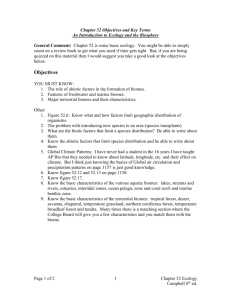
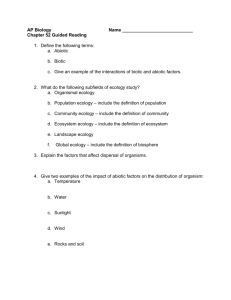


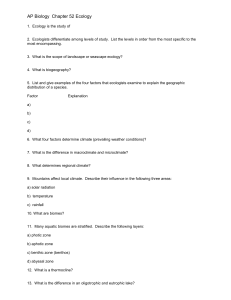

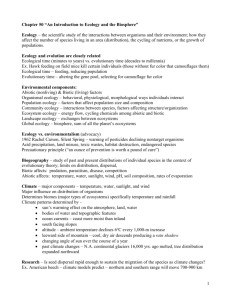

![[CLICK HERE AND TYPE TITLE]](http://s3.studylib.net/store/data/006863514_1-b5a6a5a7ab3f658a62cd69b774b6606c-300x300.png)